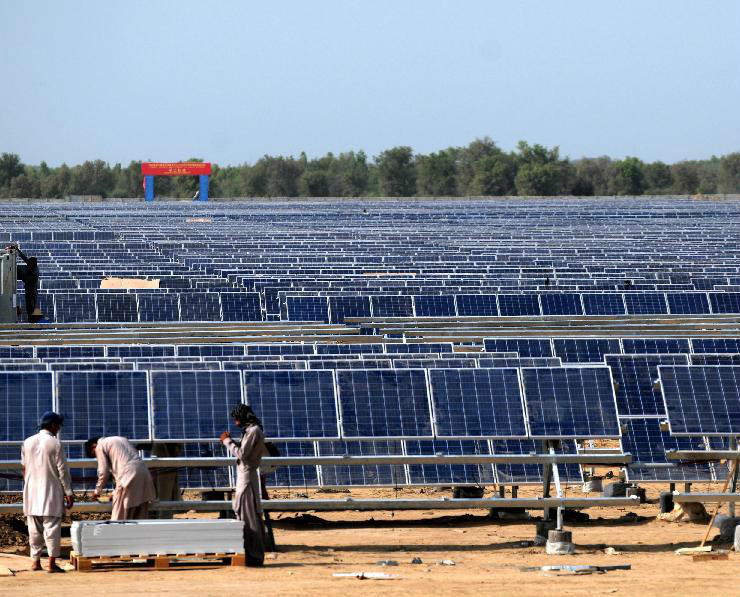‘Economic Corridor’ helps boost local economy

Workers install solar photovoltaic panels for the Zonergy 900 MW Solar Project in Bahawalpur, which is a power project under the framework of the China-Pakistan Economic Corridor.
As one demonstration project of the six major international economic cooperation corridors under the “Belt and Road” initiative, the China-Pakistan Economic Corridor is now being implemented and progressing smoothly.
Under the “Belt and Road” initiative, China has proposed the construction of six economic corridors including the New Eurasian Land Bridge along with the economic corridors of China-Mongolia-Russia, China-Central Asia-West Asia, China-Pakistan, Bangladesh-China-India-Myanmar, and China-Indochina Peninsula.
“It would be quite an appropriate metaphor to say that the ‘Belt and Road’ initiative is an economic chorus of countries along the proposed routes,” said Sun Hongqi, director of the Institute of Asian and African Studies at Jiangsu Normal University. The initiative was composed of several economic corridors, which forms a westward economic cooperation network connecting Europe, Asia and Africa, he said.
Dai Yonghong, director of the Center for Myanmar Studies at Sichuan University said the five cooperation priorities of the “Belt and Road” initiative—policy communication, facility connectivity, unimpeded trade, financial integration and public support—were not only ways to achieve connectivity between China and the countries along the routes, but also the ultimate goal for cooperation. And the construction of economic corridors will create the necessary conditions and supports for those cooperation priorities, he added.
The economic corridors should not be constructed as just routes with workable facilities and functional transportation, said Zhao Jianglin, a research fellow from the National Institute of International Strategy under the Chinese Academy of Social Sciences. What is more important is to establish general modern economic systems based on the corridors, benefiting all the participating countries along the routes, she said.
Political mutual trust and public support were the two pillars for the construction of economic corridors, Dai said. Echoing Dai’s sentiments, Sun said, for example, China and Pakistan are in an all-weather strategic partnership of cooperation. Progress on the China-Pakistan Economic Corridor was a natural result of this trust, which has become an exemplary model for promoting regional integration and establishing a “community of common destiny,” Sun said.
Dai explained the “exemplary effect” of China-Pakistan cooperation by saying it will put in place a positive cycle among the countries neighboring China as it demonstrates how China not only is able to develop itself, but also brings harmony, security and prosperity to its neighbors.
As stakeholders in the construction of these economic corridors, companies should bear their social responsibilities and help reduce poverty among the local population, Sun suggested.
Dai said the successful implementation of economic corridor projects will significantly improve the economic conditions of the countries along the routes, as well as people’s living standards and security situations, thus providing a favorable environment for the peace and development of China and its neighbors as well as the world.
When all the participants of the construction of economic corridors are benefiting from it, the “community of common destiny” can eventually be established, Sun said.
Lü Mengdi is a reporter at the Chinese Social Sciences Today.
